Trajan’s Column – A Roman Triumphal Column In Ancient Rome
A. Sutherland - AncientPages.com - Pillars of victory, also known as memorial columns, were occasionally erected to memorize the triumphs of victorious achievements of an emperor.
They were built to honor an emperor and are generally described as a great victory because the Emperor won in the name of the Roman Empire. They thus acted as propaganda, which would show the Emperor's power to the citizens and secure his legacy.
Left: Column of Marcus Aurelius. Image credit: Marco Assini - CC BY-SA 2.0: Middle: The Column of Phocas, against the backdrop of the Arch of Septimius Severus. Image credit: Jebulon - CC0: Right: The Virgin Mary as the Immaculate Conception carrying a wreath of flowers offered annually by the Roman firemen. Sculpture by Giuseppe Obici on top of the Corinthian Column of the Pagan goddess Minerva. Credit: Monopoli91 - CC BY-SA 4.0
Today there are only a few ancient columns in Rome that survived until our time, for example, the Column of the Immaculate Conception, the Column of Phocas added to the Forum Romanum, an impressive Column of Marcus Aurelius - War Monument From Ancient Rome. Still, Trajan's Column remains the most famous of them.
Even before the imperial era, generals and senators had praised their own more or less heroic deeds by building triumphal arches.
In 113 AD, Emperor Trajan chose something else and instead built, possibly because he wanted to distinguish himself from his predecessors and even recalled by future successors.
The 35 meters (98 feet) in height, massive victory column has always impressed people, and in fact, it still does). A 190-meter-long frieze, ringing 23 laps around the Column, describing Trajan's two victorious military campaigns in Eastern Europe during the Dacian Wars (101-102 AD and 105-106 AD) contributed to its popularity.
The structure is additionally decorated with a large pedestal, ornamented with sculptured trophies on three sides.
The sculpture is one of the most spectacular works of artisans and builders and includes more than 2,500 human figures, besides animals. The artwork of the ancient Roman artists was intended to illustrate the most significant incidents of Trajan's war with the Dacia.
The whole frieze is not visible from the ground, but it was surrounded on three sides by two flanking libraries and the Basilica Ulpia. Among several spectacular features of the Column is a bas-relief that spirals 23 times to the top of the Column.
One of the fascinating features of the monument is the bas-reliefs that depict scenes from the Dacian Wars.
The reliefs that adorn the Column constitute a continuous – approximately 200 meters long frieze that spirals twenty-three times around the shaft, beginning at the bottom with scenes depicting preparation and departure that anticipate the first Dacian campaign of Emperor Trajan.
Trajan's Column, Rome. Image credit: Carole Raddato - CC BY-SA 2.0
No modern equipment was used to build this Column; however, the ancient Romans managed to create many such high structures with the help of using cranes.
The shaft is made from 20 gigantic white or blue-grey marble drums, each weighing approximately 32 tons, with a diameter of 3.7 meters (12.1 feet). Inside the shaft, a spiral staircase of 185 steps provides access to a viewing platform at the top of the Column.
The top block of Trajan's Column weighs 53.3 tons (the heaviest of all), which had to be lifted to a height of approximately 35 meters (115 feet) in the air.
Trajan's column in Rome. Credit: Alvesgaspar- CC BY-SA 4.0
The Italian master builders successfully lifted this gigantic "piece "of stone, and it still stands today. The construction made a great impression on contemporaries, and later emperors began to build their victory columns. Many of them were destroyed with time, but Trajan's famous masterwork survived almost intact. Today it is only missing its original painted decoration, the metal attachments that added detail to the carved figures, and the great bronze statue of the Emperor himself that once crowned the top of the Column. Later, in December 1587/1588, Pope Sixtus replaced the statue of Emperor Trajan himself with that of St. Peter, which remains until today.
The chief architect responsible for the spectacular design of the Trajan's Column was Apollodorus of Damascus. He was the Emperor's favorite and most appreciated engineer and architect, widely known for his other notable building projects in the Roman Empire, such as the Danube Bridge, the first bridge to be constructed across the Danube and a significant feature during the Dacian Wars, among others.
The Trajan's Column (a symbol of glorification) would show the Emperor's greatness and tell a story about successful military encounters.
Most of all, the Column was and is still considered an engineering marvel of the Roman builders due to the immense excavation efforts necessary for its construction.
Updated on June 11, 2022
Written by – A. Sutherland - AncientPages.com Senior Staff Writer
Copyright © AncientPages.com All rights reserved. This material may not be published, broadcast, rewritten or redistributed in whole or part without the express written permission of AncientPages.com
Expand for referencesReferences;
Kalas G. The Restoration of the Roman Forum in Late Antiquity
MacDonald W. L. The Architecture of the Roman Empire
Beckmann M. The Column of Marcus Aurelius
More From Ancient Pages
-
 Mysterious And Unexplained Encounter With Unusual Tiny Beings In Italy – The Thing – Part 1
Featured Stories | Jan 15, 2022
Mysterious And Unexplained Encounter With Unusual Tiny Beings In Italy – The Thing – Part 1
Featured Stories | Jan 15, 2022 -
 On This Day In History: ‘Bloody Sunday’ In Northern Ireland – On Jan 30, 1972
News | Jan 30, 2017
On This Day In History: ‘Bloody Sunday’ In Northern Ireland – On Jan 30, 1972
News | Jan 30, 2017 -
 Ancient Mystery Of America’s Missing Metal – Can The Answer Be Found In Ancient Europe?
Civilizations | May 18, 2018
Ancient Mystery Of America’s Missing Metal – Can The Answer Be Found In Ancient Europe?
Civilizations | May 18, 2018 -
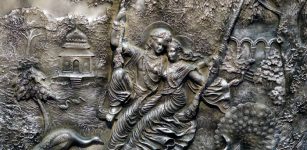 Mysterious Forest Of Treasure – Why Is It Forbidden To Stay In Nidhivan After Sunset?
Featured Stories | Nov 24, 2021
Mysterious Forest Of Treasure – Why Is It Forbidden To Stay In Nidhivan After Sunset?
Featured Stories | Nov 24, 2021 -
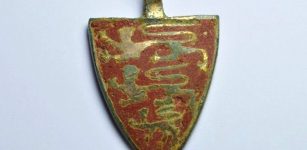 Priceless 800-Year-Old Treasure Featuring Three Golden Lions Unearthed
Archaeology | Aug 5, 2022
Priceless 800-Year-Old Treasure Featuring Three Golden Lions Unearthed
Archaeology | Aug 5, 2022 -
 Ancient Maya Stela Carved On Both Sides Unearthed ‘In Situ’ In Uxmal, Yucatan Peninsula
Archaeology | Oct 31, 2022
Ancient Maya Stela Carved On Both Sides Unearthed ‘In Situ’ In Uxmal, Yucatan Peninsula
Archaeology | Oct 31, 2022 -
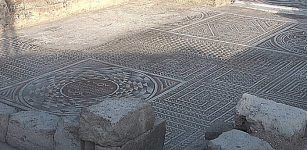 Large 4th Century Mosaic Floor Unearthed In İncesu, Kayseri Province, Turkey
Archaeology | Nov 28, 2023
Large 4th Century Mosaic Floor Unearthed In İncesu, Kayseri Province, Turkey
Archaeology | Nov 28, 2023 -
 Giant Pre-Hispanic Jar Used To Make Mexican Traditional Corn Beer
Archaeology | May 6, 2020
Giant Pre-Hispanic Jar Used To Make Mexican Traditional Corn Beer
Archaeology | May 6, 2020 -
 Ancient Scandinavians Never Spoke Of Themselves As Vikings – Here Is Why
Ancient History Facts | Mar 15, 2021
Ancient Scandinavians Never Spoke Of Themselves As Vikings – Here Is Why
Ancient History Facts | Mar 15, 2021 -
 On This Day In History: Greek Archaeologist Manolis Andronikos Who Discovered Tomb of Philip II of Macedon, Was Born – On Oct 23, 1919
News | Oct 23, 2016
On This Day In History: Greek Archaeologist Manolis Andronikos Who Discovered Tomb of Philip II of Macedon, Was Born – On Oct 23, 1919
News | Oct 23, 2016 -
 3,000-Year-Old Silver Goblet That May Have Belonged To Mannaea Kingdom – Unearthed
Archaeology | Apr 3, 2019
3,000-Year-Old Silver Goblet That May Have Belonged To Mannaea Kingdom – Unearthed
Archaeology | Apr 3, 2019 -
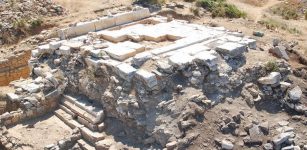 Excavations Begin In Ancient City Of Antiocheia Ad Cragnum, Turkey
Archaeology | Sep 4, 2015
Excavations Begin In Ancient City Of Antiocheia Ad Cragnum, Turkey
Archaeology | Sep 4, 2015 -
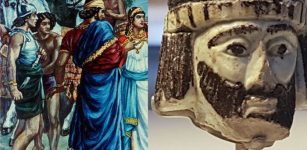 Enigma Of 3,000-Year-Old Sculpted Head Of Biblical King Discovered In Israel
Archaeology | Jun 11, 2018
Enigma Of 3,000-Year-Old Sculpted Head Of Biblical King Discovered In Israel
Archaeology | Jun 11, 2018 -
 2,000-years-old tomb found in S. China
Archaeology | Apr 6, 2016
2,000-years-old tomb found in S. China
Archaeology | Apr 6, 2016 -
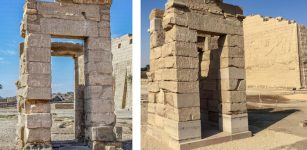 Ancient Egyptian Monuments Threatened By Climate Change Restored By Oriental Institute
News | Mar 9, 2023
Ancient Egyptian Monuments Threatened By Climate Change Restored By Oriental Institute
News | Mar 9, 2023 -
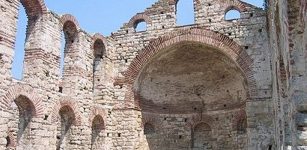 Ancient Nessebar – 3,000-Year-Old History Of Many Civilizations
Featured Stories | Jan 10, 2016
Ancient Nessebar – 3,000-Year-Old History Of Many Civilizations
Featured Stories | Jan 10, 2016 -
 Bjorn Ironside: Famous Viking Who Captured Luna By Mistake Instead Of Ancient Rome As Planned
Featured Stories | Jun 11, 2016
Bjorn Ironside: Famous Viking Who Captured Luna By Mistake Instead Of Ancient Rome As Planned
Featured Stories | Jun 11, 2016 -
 First Genetic Map Of People Of Ireland Is Presented By Irish, British And American Researchers
Archaeology | Dec 15, 2017
First Genetic Map Of People Of Ireland Is Presented By Irish, British And American Researchers
Archaeology | Dec 15, 2017 -
 On This Day In History: Battle Of Cowpens Took Place – On Jan 17, 1781
News | Jan 17, 2017
On This Day In History: Battle Of Cowpens Took Place – On Jan 17, 1781
News | Jan 17, 2017 -
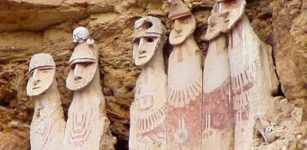 Genetic Evidence Reveals: Chachapoyas “Cloud People” Resistant To Inca Rule
Archaeology | Dec 14, 2017
Genetic Evidence Reveals: Chachapoyas “Cloud People” Resistant To Inca Rule
Archaeology | Dec 14, 2017



